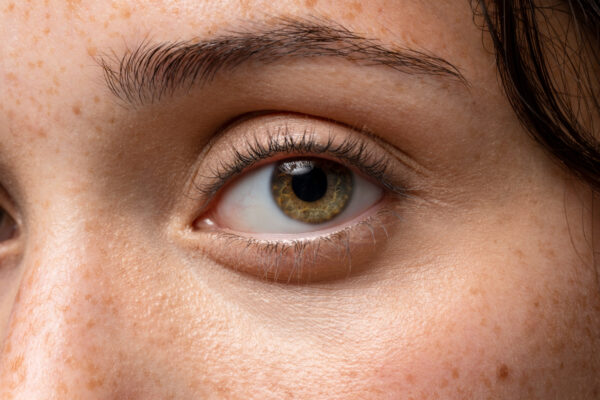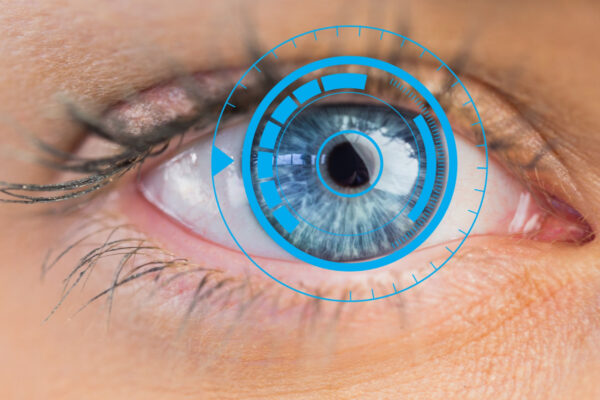Dry eyes are no fun: They itch, sting and tear up. They’re a possible side effect of LASIK eye surgery, but usually they clear up within the first year of recovery. Some experts have estimated that as many as eight out of 10 LASIK patients deal with some dry eye symptoms in the weeks following their procedures.
Did You Know?
Our tears have 3 layers – Oily, Watery & Mucus layer – that play a key role in good vision.

Tears and Their Role
Our tears play a huge role in our vision.
- Tears consist of three layers: oily, watery, and mucus. These layers help maintain a smooth eye surface, wash away debris, and keep the eye moist, essential for clear vision.
- Insufficient tear production can cause dry eyes, leading to irritation and discomfort.
It is imperative that we pay attention to our eyes, and we take into consideration all our symptoms when we start to consider refractive options, whether that is glasses, contacts, or a form of LASIK eye surgery.
Dry Eyes: Causes and Symptoms

Dry eyes is a symptom where your eyes either don’t produce enough tears, they don’t make the right type of tears, or your tears dry out quickly.
- Causes: Inadequate tear production, poor-quality tears, or rapid tear evaporation as well as other demographic criteria.
- Symptoms: Blurred vision, tiredness, itchiness, redness, burning, excessive tearing, and stinging.
Why does LASIK create temporary dry eyes?
LASIK is a remarkably safe and effective surgical procedure, one that has only gotten safer over the previous decade. Nevertheless, no surgery is without risks, even if they are relatively uncommon, as is the case with LASIK.
- Pre-LASIK: An estimated 38% and 75% (National Library of Medicine of LASIK candidates already have dry eyes, often due to contact lens intolerance.
With LASIK, the reason why someone can experience dry eyes post-surgery is due to how the surgery is performed: LASIK alters the shape of your cornea, through the creation of a corneal flap, which in turn affects the tear film due to the flap creating temporary damage to the corneal nerve.
- Post-LASIK: Up to 95% of patients experience temporary dry eye symptoms due to the procedure’s impact on corneal nerves.
- According to an FDA led study
- For those who reported having dry eye symptoms before LASIK, nearly 60 percent reported their symptoms resolved after having LASIK.
- Less than 30 percent of patients with no symptoms before LASIK reported having dry eye symptoms after LASIK. The majority – 85 percent – reported the symptoms were mild.
- Regardless of whether or not they had dry eye symptoms before LASIK, patients reporting dry eye symptoms after LASIK continued to see improvement in their symptoms over time.
- According to an FDA led study
- Good News:
- Symptoms usually improve within 3-12 months with proper care.
- PRK (Photorefractive Keratectomy) may be a better option for individuals prone to dry eyes.
Treatment for Dry Eyes
Dry eyes can be treated in several ways. Your doctor might suggest preservative-free artificial tear drops. If you suffer from keratoconjunctivitis sicca, or dry eye syndrome, topical cyclosporine prescription eye drops can offer additional relief. Even blinking more frequently while at the computer can help with dry eyes in the weeks following a LASIK procedure.
Some people have dry eyes before they have LASIK. It is important for these people to let their surgeons know about this condition before having laser eye surgery. Often, a LASIK surgeon will want to treat a case of dry eyes before performing the procedure.
- Artificial Tears: Available over the counter with or without preservatives.
- Punctal Plugs: Inserts that prevent tear drainage.
- Prescription Eye Drops: Stimulate natural tear production.
- Humidifiers: Add moisture to the air, especially in dry environments.
- Omega-3 Fatty Acids: Reduce inflammation and support eye health.
LASIK Candidacy and Management
Identifying patients at risk for severe post-LASIK dry eye is crucial to improve comfort and optimize surgical outcomes.
Proper evaluation, clear communication about symptoms, and personalized treatment plans can significantly reduce dry eye risks and enhance LASIK outcomes. If you are ready to explore the possibility of LASIK eye surgery, schedule your consultation today to see if LASIK is right for you.

Find a LASIK Surgery Location Near You
We’re located nationwide – it’s easy to find a LASIK Vision Center near you.
Sources:
American Academy of Ophthalmology. (2024). What Is Dry Eye? Symptoms, Causes and Treatment. Retrieved from https://www.aao.org/eye-health/diseases/what-is-dry-eye
American Refractive Surgery Council. (2018). LASIK Dry Eyes: Understanding Dry Eyes After LASIK. Retrieved from https://americanrefractivesurgerycouncil.org/understanding-dry-eye-symptoms-lasik/
LASIK.com. (2024). Am I A Safe Candidate for LASIK? Retrieved from https://www.lasik.com/safe-candidate-lasik/
National Library of Medicine. (2011). Post-LASIK dry eye. Retrieved from https://pmc.ncbi.nlm.nih.gov/articles/PMC3235707/#R4
WebMD. (2022). Dry Eye After LASIK. Retrieved from https://www.webmd.com/eye-health/dry-eye-after-lasik
Disclaimer: This information is for general knowledge and informational purposes only and does not constitute medical advice. Consult with a qualified healthcare professional for diagnosis and treatment of any medical conditions.
Categories:



